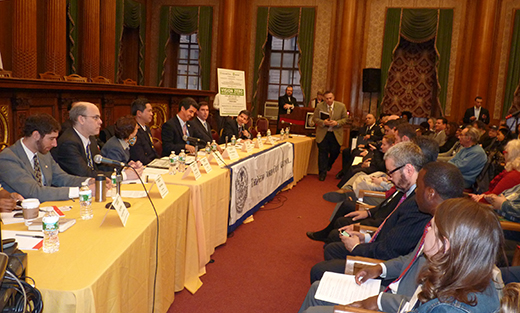Vision Zero issue packs Brooklyn Borough Hall
BP Adams: Tired of ‘white bikes’

An overflow crowd of Brooklyn residents and community organizers packed a town hall on Tuesday at Borough Hall to hear about Mayor Bill de Blasio’s Vision Zero plan to end traffic deaths and injuries.
It’s an issue that “has brought all New Yorkers together,” said City Councilmember Ydanis Rodriguez (Washington Heights, Inwood), who chairs the Transportation Committee.
Grieving mother Rochelle Charles, whose five-year-old son Rashard was killed March 16 on Empire Boulevard in Crown Heights, shared the dais with officials and commissioners as the human face of the tragedy.

Brooklyn Boro
View MoreNew York City’s most populous borough, Brooklyn, is home to nearly 2.6 million residents. If Brooklyn were an independent city it would be the fourth largest city in the United States. While Brooklyn has become the epitome of ‘cool and hip’ in recent years, for those that were born here, raised families here and improved communities over the years, Brooklyn has never been ‘uncool’.